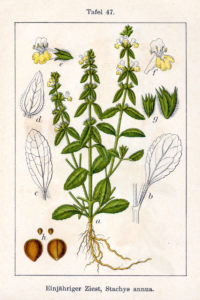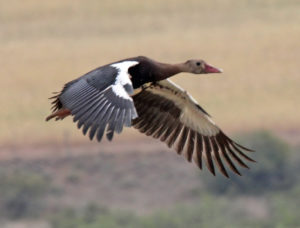Introduction:
To consider something toxic, it must produce “an adverse biological effect” to humans or other animals (“Basic Terminology”). For birds, several species have adverse effects on humans through touch or ingestion. The remainder of this article explores several of these species including quail, pitohui birds, and spur-winged geese.
Quail:
Sources from the Roman Empire and the Bible document epidemics caused by the consumption of quail. The disease, referred to today as coturnism, only affected humans during certain migration periods. As the birds travel west to Europe, their flesh becomes deadly, but when they returned east, the birds are no longer toxic. Scientists believe the toxicity in quails comes from their own diet. Early speculation of quail toxicity thought the birds ingested plants like hemlock or henbane, but recent researchers believe that the culprit is Stachys annua, a plant that exhibits toxicity at consistent intervals with the quail migration (Bartram & Boland).

Pitohui Birds:
The pitohui birds, native to New Guinea, have a neurotoxin originally only thought present in poison-dart frogs (found in Columbia and Central America). The toxin, present on the bird’s feathers and bodily tissue, if touched, can cause nausea, numbness, burning, and sneezing. With more exposure, the neurotoxin can lead to severe symptoms such as convulsions and contractions. (Bartram & Boland). The concentration of poison in the pitohui birds is 3-times less than that of the poison-dart frog. Contact with a frog can lead to cardiac arrest and death, but these extreme issues are much less common after contact with the pitohui birds (Ligabue-Braun & Carlini). The neurotoxins found in both pitohui birds and poison-dart frogs can only develop with appropriate diet. Poison dart frogs, when raised in captivity, no longer have the neurotoxin, and scientists assume the same is true for the birds. The specific ingredient that causes the poisonous neurotoxin remains unknown (Bartram & Boland). The low concentration of neurotoxins in pitohui birds causes some scientists to believe that the toxin developed evolutionarily to deter against parasites. Research shows that these birds have one of the lowest rates of tick infestations compared to other species in the area (Ligabue-Braun & Carlini).

Other:
There are 13 other documented bird species that can harm or kill a human because of their own diet. Spur-winged geese, for example, eat a type of beetle that contains toxic material which causes severe skin blisters and death in humans (Bartram & Boland). More research is needed in the field of toxic birds to document reactions and determine causes of toxicity.

Citations:
Bartram, S. and Boland, W. (2001), Chemistry and Ecology of Toxic Birds. ChemBioChem, 2: 809-811. doi:10.1002/1439-7633(20011105)2:11<809::AID-CBIC809>3.0.CO;2-C
“Basic Terminology.” U.S. National Library of Medicine, National Institutes of Health, toxtutor.nlm.nih.gov/01-002.html.
Ligabue-Braun, Rodrigo, and Célia Regina Carlini. “Poisonous Birds: A Timely Review.” Toxicon, vol. 99, 2015, pp. 102–108., doi:10.1016/j.toxicon.2015.03.020.
Picture Sources:
https://commons.wikimedia.org/wiki/File:Spur-winged_Goose_RWD4.jpg
https://en.m.wikipedia.org/wiki/File:Rectes_uropygialis_-_The_Birds_of_New_Guinea.jpg
https://commons.wikimedia.org/wiki/File:Stachys_annua_Sturm47.jpg


